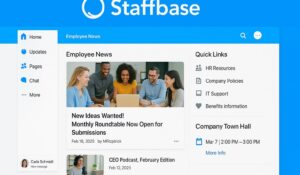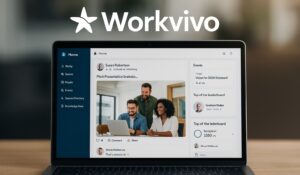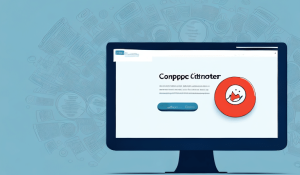Employee communication strategies have evolved considerably over the last couple of decades, particularly because of technological advancements. However, although technology has driven much of employee engagement’s evolution, the strategies behind that technology might have provided even stronger catalysts for change.
Shifts in Focus
Two decades ago, when the concept of employee engagement first began to gain traction, employers focused on employee satisfaction. They thought that happy employees would automatically translate into improved processes, better productivity, and a healthier work environment. As it turns out, that is not necessarily the case.
If you allow employees to make personal calls while on the job, chat with their coworkers instead of completing assignments, and show up to work late every other day, they might express job satisfaction. However, their behavior does not benefit the company.
When the job-satisfaction angle did not pan out, organizations shifted their focus to employee commitment. They wanted to improve staff loyalty to reduce employee turnover. However, there is no way to guarantee commitment from any professional. During periods of economic crisis, employers had to lay off employees, who then discovered that they needed to look for the best opportunities instead of sticking with a company just for loyalty’s sake.
Next came employee engagement. Employers discovered that staff members were more loyal, productive, efficient, and satisfied if they felt they had some skin in the game. If employees legitimately felt connected to a company, they would most likely provide the best possible service.
Transition to Multi-Way Communication
As companies shifted away from myopic approaches like employee satisfaction and loyalty, they discovered that multi-way communication paved the path toward mutually beneficial employment relationships. Companies adopted more sophisticated employee communication strategies, starting with technological advancements like email and instant messaging.
Both of those solutions prove valuable, but only to a point. Email often feels clunky and outdated, especially since group conversations can quickly derail through endless threads, forwards, and replies. Instant messaging offers a better solution because of its speed and transparency, but organizations need a built-in solution that works with other employee communication strategies.
That is where employee engagement apps come in. They combine multiple features under one umbrella, which shortens the learning curve and helps employees feel more secure during communications. Furthermore, engagement apps provide companies with actionable data and information that email and standalone instant messaging programs cannot provide. They are also more secure than consumer applications.
Opportunities for Better Training
Employee training once consisted of lengthy seminars and speeches that often put more people to sleep than Unisom. Today, however, employee communication strategies have evolved to include interactive and entertaining training solutions.
If you have never used a mobile employee engagement app for training, you are missing out. These apps help mold staff members into top talent and encourage workers to pursue more education, whether it is on the job or outside the workplace.
Videos, for instance, are faster and easier than holding an on-site symposium. Employees can watch the videos at their own pace — pausing the recording to repeat something they missed, for instance, or to better understand something the trainer said.
There is also the interactive component. As employees go through training on an app, they can compare their quiz scores and other metrics with those of their colleagues. A little friendly competition can help a team grow closer while encouraging staff members to excel every moment they spend on the job.
Shift From One-Time Engagement to Ongoing Support

In recent years, employers have begun exploring more comprehensive options through employee engagement apps. Instead of sending out monotonous surveys that ask staff members to rate certain criteria between one and 10, forward-thinking employers have implemented sophisticated feedback systems.
Not only can employees send feedback in real-time and make suggestions for upper management, but they can also participate in a social culture that encourages collaboration and teamwork. Employees who are engaged with their coworkers as well as with the company at large often become more valuable members of an organization.
Access to Better Data
Employee engagement, as mentioned above, should not be one-sided. Organizations that leave engagement up to the employee will invariably fail because they close off opportunities to improve the workplace.
The best employee engagement apps provide access to back-end analytics that track trends in employee behaviors and provide data-supported insights. Many companies have embraced Big Data in HR. Employee communication strategies can unite all data under one program and give employers unprecedented views into their staff members’ habits, strengths, and weaknesses.
Now that employers understand the benefits of employee engagement, they are constantly looking for new ways to keep their employees happy while still creating a productive, high-energy work environment. If those results sound attractive to you, try the HubEngage app for free. At hubEngage, we build employee communication strategies that work across industries and cultures to create more engaged workers.













